MUSCIMOL
Synonym(s):3-Hydroxy-5-aminomethyl-isoxazole;5-Aminomethyl-3-hydroxy-isoxazole;5-Aminomethyl-3-hydroxyisoxazole hydrobromide;5-Aminomethyl-3-isoxazolol;Agarine
- CAS NO.:2763-96-4
- Empirical Formula: C4H6N2O2
- Molecular Weight: 114.1
- MDL number: MFCD00057894
- EINECS: 220-430-4
- SAFETY DATA SHEET (SDS)
- Update Date: 2024-12-18 14:15:30

What is MUSCIMOL?
Description
The amino acid γ-
Chemical properties
Tan Solid
The Uses of MUSCIMOL
A potent but toxic structural analogue of g-aminobutyric acid (GABA), with a zwitterionic structure that can cross the blood-brain barrier
The Uses of MUSCIMOL
As a molecular probe to study GABA receptors.
What are the applications of Application
Muscimol is a potent and specific GABAA receptor agonist/GABA analog
Definition
ChEBI: A member of the class of isoxazoles that is 1,2-oxazol-3(2H)-one substituted by an aminomethyl group at position 5. It has been isolated from mushrooms of the genus Amanita.
Synthesis Reference(s)
The Journal of Organic Chemistry, 48, p. 4307, 1983 DOI: 10.1021/jo00171a030
Synthetic Communications, 12, p. 1089, 1982 DOI: 10.1080/00397918208065973
General Description
Crystals. Formerly used as a sedative and an anti-emetic.
Reactivity Profile
MUSCIMOL is a ketone and an amine. Amines are chemical bases. They neutralize acids to form salts plus water. These acid-base reactions are exothermic. The amount of heat that is evolved per mole of amine in a neutralization is largely independent of the strength of the amine as a base. Amines may be incompatible with isocyanates, halogenated organics, peroxides, phenols (acidic), epoxides, anhydrides, and acid halides. Flammable gaseous hydrogen is generated by amines in combination with strong reducing agents, such as hydrides
Health Hazard
MUSCIMOL is a natural constituent of amanita mushrooms and is extremely toxic. It is a potent central nervous system depressant, and is believed to be responsible for most of the nervous system effects that result from eating this mushroom. The lowest toxic dose in humans has been reported at 109 mg/kg.
Health Hazard
Muscimol is a toxic alkaloid of poisonousmushroom species, producing neurologicaction. It is a potent depressant of thecentral nervous system. The adverse healtheffects from its ingestion include sleep,hallucination, distorted perceptions, andvomiting.
LD50 value, oral (mice): 17 mg/kgLD50 value, intraperitoneal (mice): 2.5 mg/kg.
Fire Hazard
When heated to decomposition, MUSCIMOL emits toxic fumes of nitrogen oxides.
Biological Activity
Potent GABA A receptor agonist and partial GABA C receptor agonist. Inhibits memory retention and attenuates airway constriction in vivo .
Potential Exposure
Formerly used as a sedative and as anantiemetic; and for experimental laboratory purposes.
First aid
If this chemical gets into the eyes, remove anycontact lenses at once and irrigate immediately for at least15 min, occasionally lifting upper and lower lids. Seek medical attention immediately. If this chemical contacts theskin, remove contaminated clothing and wash immediatelywith soap and water. Speed in removing material from skinis of extreme importance. Seek medical attention immediately. If this chemical has been inhaled, remove from exposure, begin rescue breathing (using universal precautions,including resuscitation mask) if breathing has stopped andCPR if heart action has stopped. Transfer promptly to amedical facility. When this chemical has been swallowed,get medical attention. Give large quantities of water andinduce vomiting. Do not make an unconscious personvomit.
storage
Room temperature
Purification Methods
Recrystallise muscimol from MeOH/tetrahydrofuran or EtOH and sublime it at 110-140o (bath) at 10-4 mm to give a yellow spot with ninhydrin which slowly turns purple [NMR: Bowden et al. J Chem Soc (C) 172 1968]. It can also be purified by dissolving in the minimum volume of hot H2O and adding EtOH dropwise until cloudy, cool, and colourless crystals separate; IR: max 3445w, 3000-2560w br, 2156w, 1635s and 1475s cm-1. [NMR: Jager & Frey Justus Liebigs Ann Chem 817 1982.] Alternatively it has been purified by two successive chromatographic treatments on Dowex-1 x 8, with the first elution with 2M AcOH and a second with a linear gradient between 0—2M AcOH, evaporating the desired fractions and recrystallising the residue from MeOH. [McCarry & Savard Tetrahedron Lett 22 5153 1981, Nakamura Chem Pharm Bull Jpn 19 46 1971.]
Properties of MUSCIMOL
| Melting point: | 175-176°C |
| Boiling point: | 213.59°C (rough estimate) |
| Density | 1.291 |
| refractive index | 1.4487 (estimate) |
| storage temp. | 2-8°C |
| solubility | ethanol: 1 mg/mL |
| pka | 12.19±0.40(Predicted) |
| form | powder |
| color | white to off-white |
| Water Solubility | Soluble in water (10 mg/ml), methanol, ethanol, 0.05 M HCl (20 mg/ml), DMSO (sparingly soluble), DMF (sparingly soluble), and PBS (pH 7.2) (10 mg/ml). |
| Merck | 13,6336 |
| BRN | 1618960 |
| Stability: | Hygroscopic, Store in Freezer at -20°C |
| EPA Substance Registry System | 5-(Aminomethyl)-3-isoxazolol (2763-96-4) |
Safety information for MUSCIMOL
| Signal word | Danger |
| Pictogram(s) |
 Skull and Crossbones Acute Toxicity GHS06 |
| GHS Hazard Statements |
H300:Acute toxicity,oral H336:Specific target organ toxicity,single exposure; Narcotic effects |
| Precautionary Statement Codes |
P261:Avoid breathing dust/fume/gas/mist/vapours/spray. P264:Wash hands thoroughly after handling. P264:Wash skin thouroughly after handling. P270:Do not eat, drink or smoke when using this product. P271:Use only outdoors or in a well-ventilated area. P301+P310:IF SWALLOWED: Immediately call a POISON CENTER or doctor/physician. |
Computed Descriptors for MUSCIMOL
New Products
Tert-butyl bis(2-chloroethyl)carbamate 4-Methylphenylacetic acid N-Boc-D-alaninol N-BOC-D/L-ALANINOL 3-Morpholino-1-(4-nitrophenyl)-5,6-dihydropyridin- 2(1H)-one Furan-2,5-Dicarboxylic Acid Tropic acid 1,1’-CARBONYLDIIMIDAZOLE DIETHYL AMINOMALONATE HYDROCHLORIDE R-2-BENZYLOXY PROPIONIC ACID 1,1’-CARBONYLDI (1,2-4 TRIAZOLE) N-METHYL INDAZOLE-3-CARBOXYLIC ACID (2-Hydroxyphenyl)acetonitrile 4-Bromopyrazole 5-BROMO-2CYANO PYRIDINE 5,6-Dimethoxyindanone 5-broMo-2-chloro-N-cyclopentylpyriMidin-4-aMine 2-(Cyanocyclohexyl)acetic acid 4-methoxy-3,5-dinitropyridine 2-aminopropyl benzoate hydrochloride 1-(4-(aminomethyl)benzyl)urea hydrochloride diethyl 2-(2-((tertbutoxycarbonyl)amino) ethyl)malonate tert-butyl 4- (ureidomethyl)benzylcarbamate Ethyl-2-chloro((4-methoxyphenyl)hydrazono)acetateRelated products of tetrahydrofuran
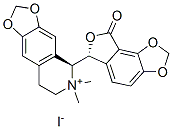
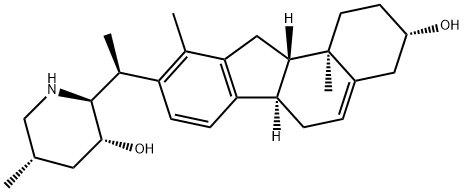

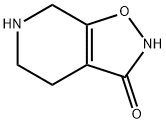
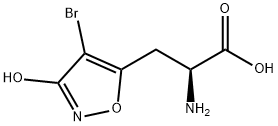


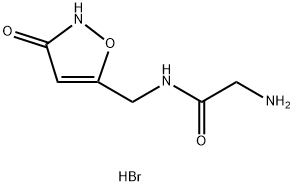
You may like
-
 Muscimol CAS 2763-96-4View Details
Muscimol CAS 2763-96-4View Details
2763-96-4 -
 Muscimol CAS 2763-96-4View Details
Muscimol CAS 2763-96-4View Details
2763-96-4 -
 1975-50-4 98%View Details
1975-50-4 98%View Details
1975-50-4 -
 2-HYDROXY BENZYL ALCOHOL 98%View Details
2-HYDROXY BENZYL ALCOHOL 98%View Details
90-01-7 -
 2-Chloro-1,3-Bis(Dimethylamino)Trimethinium Hexafluorophosphate 221615-75-4 98%View Details
2-Chloro-1,3-Bis(Dimethylamino)Trimethinium Hexafluorophosphate 221615-75-4 98%View Details
221615-75-4 -
 14714-50-2 (2-Hydroxyphenyl)acetonitrile 98+View Details
14714-50-2 (2-Hydroxyphenyl)acetonitrile 98+View Details
14714-50-2 -
 118753-70-1 98+View Details
118753-70-1 98+View Details
118753-70-1 -
 733039-20-8 5-broMo-2-chloro-N-cyclopentylpyriMidin-4-aMine 98+View Details
733039-20-8 5-broMo-2-chloro-N-cyclopentylpyriMidin-4-aMine 98+View Details
733039-20-8